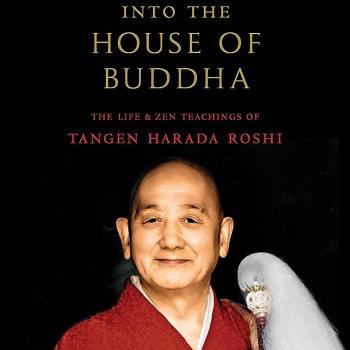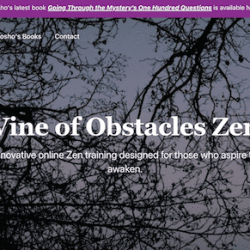 In a recent conversation with dharma friends, a quirky detail from the Wild Fox Koan came up. Click here for an old post wherein I quote the whole ugly affair.
In a recent conversation with dharma friends, a quirky detail from the Wild Fox Koan came up. Click here for an old post wherein I quote the whole ugly affair.
Deep into the koan, after the wild fox/former Baizhang has an awakening, he asks the present Baizhang,
“Would you perform the funeral service for a deceased monk for me?”
In Daishugyo, Dogen comments, “This is not an appropriate thing to ask.”
Why not? “If we look for such precedents, there has never been anything like it.”
And just like Dogen, he looks at the story with fresh eyes, “Do not groundlessly regard the transmogrification of a wild fox spirit as authentic and do not make light of the dharma standards of buddha ancestors.”
How about us here and now? There are many old ways that in the adaptation of Zen to the modern world, we have changed without finding any precedent for.
Monks who don’t live in monasteries or have life styles any different than laypeople, for example, or who live in monasteries but marry and have kids. See an excellent post about this by Jiryu, “Why There’s No Zen in the West” here.
Although Dogen is regarded today as an old fart and dogmatic about tradition (and the above passages support that view), in his time he was and wasn’t.
Dogen was also an innovator, extensively adapting the Chinese way to fit Japan, or perhaps taking the Chinese way and going beyond it (depending on your tastes). For example, Dogen was really into Chinese monastic architecture but developed oryoki-style eating which certainly was not part of Chinese Ch’an. Dogen took the emerging koan tradition of the Linchi (Rinzai) line and the silent illumination approach of the Caodong (Soto) School and integrated them, vivified them, and in the process reinvented zazen (or at least its expression).
Dogen was also an innovator in what defined a monk. He never took the Vinaya precepts (as far as we can tell) like every “real” Chinese monk and almost all of the Chinese Zen ancestors (there might have been one or two that didn’t but the exception proves the rule in this case) but adapted the Japanese Tendai style and attributed it to his teacher Rujing.
And then there’s his dharma presentation based on and within the mosaic of the tradition but playing with it in wild and wonderful ways. That’s why the old fart is still remembered.
And that’s what I think would be best here and now with the various form and style issues too. In other words, it’s best when we have deep familiarity with the tradition, are bound by it, but are free to express ourselves through it – and beyond it when possible.
Like my doggie, Bodhi, above. He’s got a hell-of-a collar and can play so freely within it.












